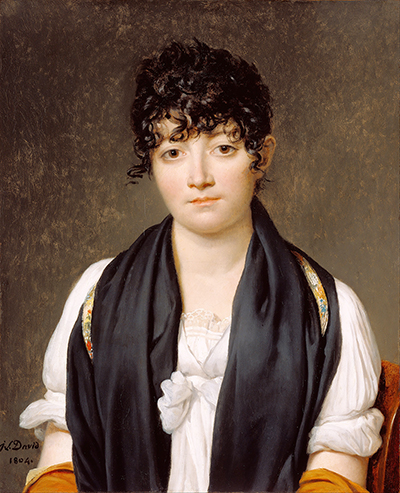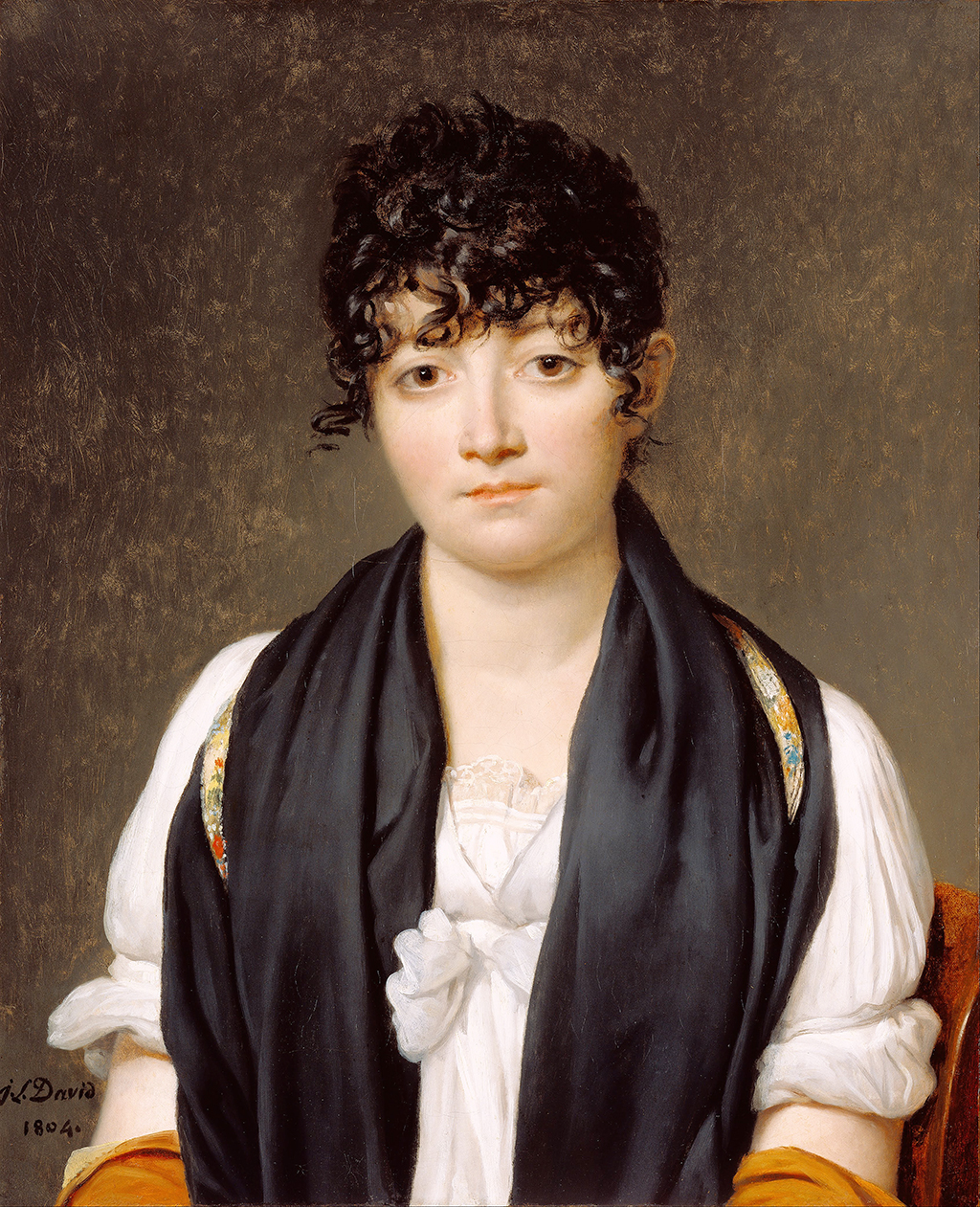This portrait from David is unusual in the sense that normally the artist would cover the full length of his models. Here, Suzanne looks seriously as us, with the canvas cropped around her elbows.
Suzanne Le Pelletier de Saint Fargeau looks slightly unprepared for this painting, with her hair hanging loosely and relatively unstyled. Her curls look graceful but untidy, and her expression is not one of comfort. Her head leans ever so slightly to the right and she wears a black scarf over her simple white dress. David would typically dress his models in plain outfits before adding some accessories himself in order to increase the visual detail and colour. She has a small bow around her chest and her short sleeves have detail by her elbows. Her makeup is again minimal, just as with many of his portraits from around this period - the portrait is dated at around 1804 and by this point there were many fewer portraits coming from his hand than had previously been the case.
At the time of this work, the model was actually just 22 years old. She was actually engaged to be married at the time of this work, and so perhaps the commissioned piece was as a preparation or celebration of that. It feels distinctly private in tone, whilst many of his other pieces were more open in composition. It may simply have been that at this young age she was a little shy and not as confident with being in this artist's company as others that he painted. The woman's father was a famous revolutionary who was murdered around a decade earlier, and as such she was protected by many who pitied her plight. The painting can now be found at the J. Paul Getty Museum, alongside a number of other original artworks from Jacques Louis David.
French art was probably at its peak between the 17th and 19th centuries, with a plethora of skilled artists producing work across a variety of movements. In terms of those related to David, the romanticists of Gericault and Delacroix should be of particular interest. Indeed, David actually produced a portrait of Delacroix's elder sister when he was just an infant. Their expressive style would attract many academics who found this new approach uplifting and powerful, whilst some saw the Neo-classical work of David to be rooted in the past, perhaps too much. The Louvre now allows us to enjoy all of these artists and places them close by in related rooms. Notable highlights to look out for include Gericault's The Raft of the Medusa and The Charging Chasseur, whilst Delacroix's oeuvre features Liberty Leading the People and Women of Algiers.





